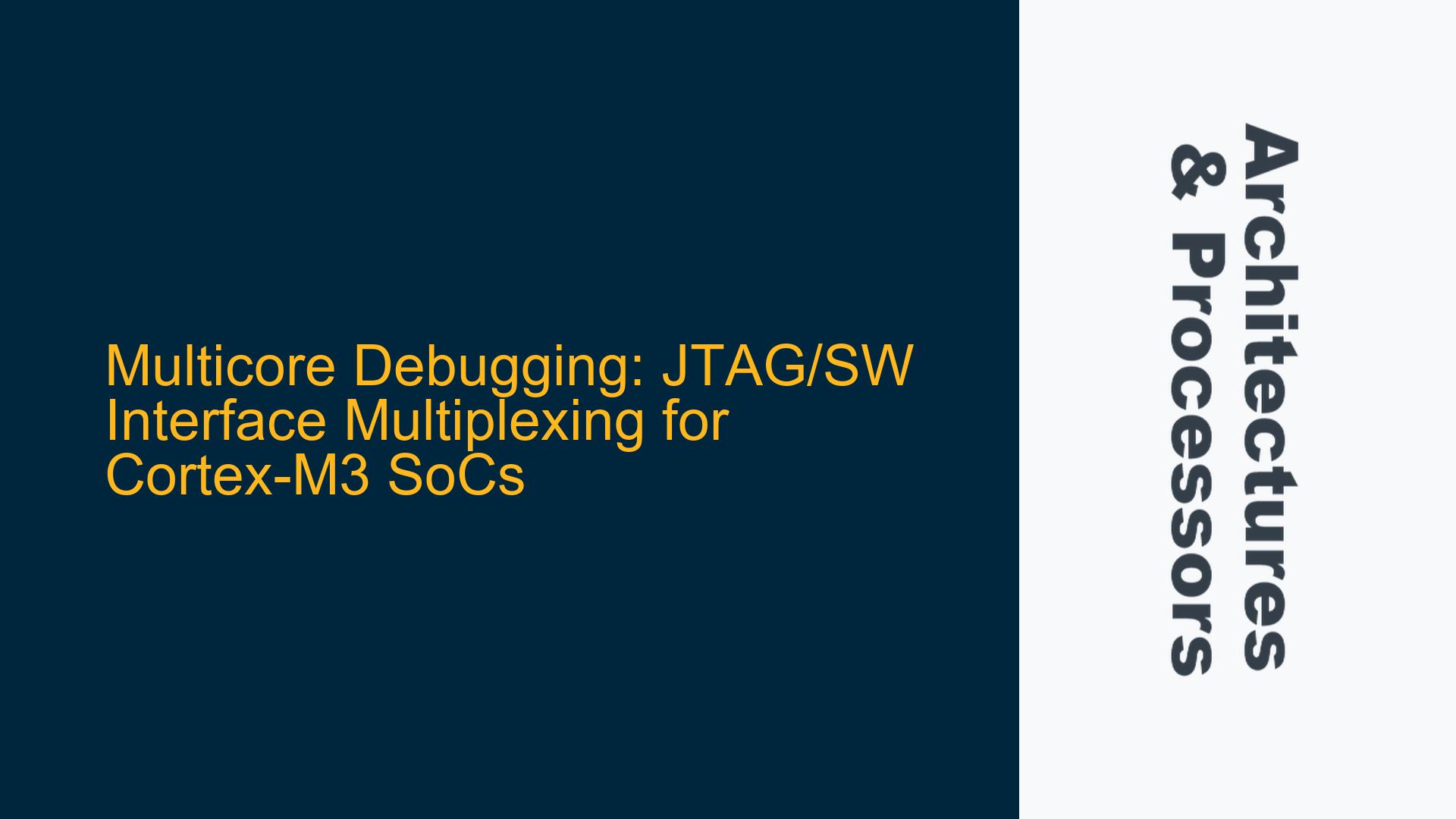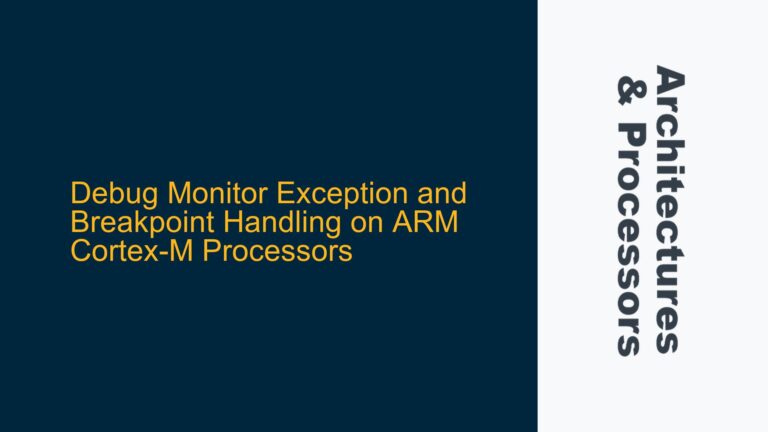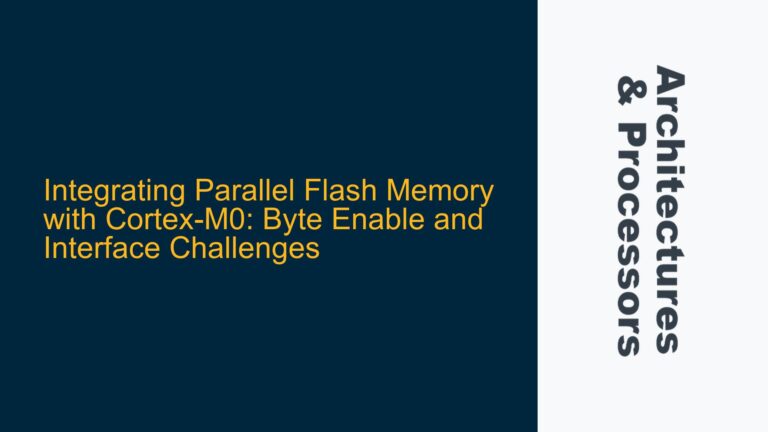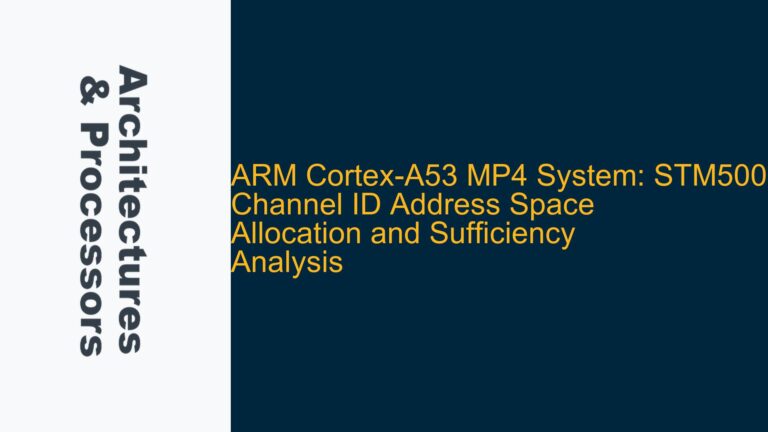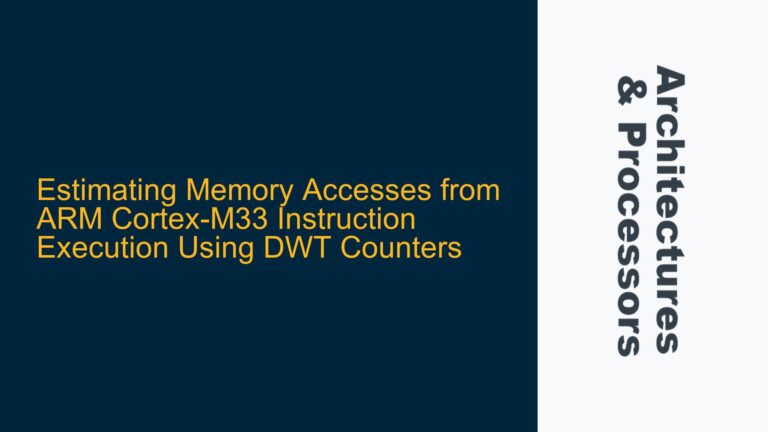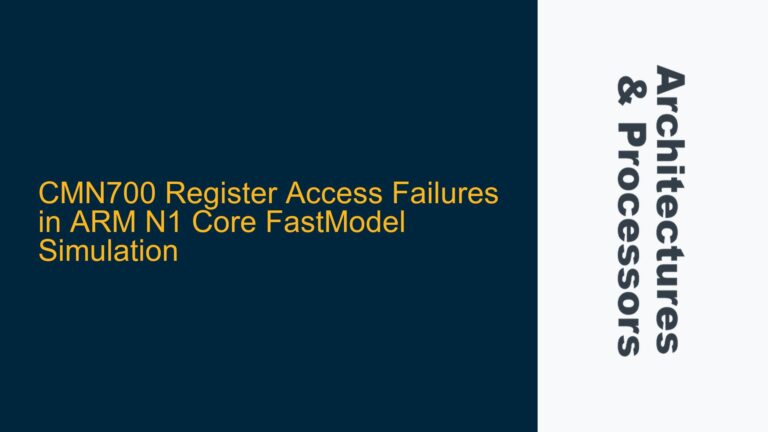Cortex-M3 Multicore Debugging with Single JTAG/SW Interface
When designing a multicore system with multiple instances of ARM Cortex-M3 processors, one of the critical challenges is providing an efficient and scalable debugging interface. Each Cortex-M3 core typically comes with its own Debug Access Port (DAP), which supports both JTAG and Serial Wire (SW) debugging protocols. However, bringing out individual JTAG/SW interfaces for each core is impractical due to pin count limitations, board space constraints, and increased complexity in debugging tools. The goal is to multiplex the JTAG/SW interfaces of multiple Cortex-M3 cores into a single external interface while maintaining full debug capabilities for each core.
The Cortex-M3 DAP is a bus slave interface that allows external debug tools to access the core’s internal registers, memory, and peripherals for debugging purposes. The DAP supports both JTAG and SW protocols, which are widely used in embedded systems. JTAG is a serial interface that uses a daisy-chained topology, while SW is a two-wire interface that provides similar functionality with fewer pins. To multiplex these interfaces, a robust RTL-based solution is required to manage the debug traffic between the external debugger and the multiple Cortex-M3 cores.
Debug Access Port (DAP) Bus Integration Challenges
The primary challenge in multiplexing JTAG/SW interfaces for multiple Cortex-M3 cores lies in the integration of the DAP bus. Each Cortex-M3 core has its own DAP bus slave interface, which must be connected to a shared debug infrastructure. The DAP bus is a proprietary ARM interface that facilitates communication between the debugger and the core’s internal debug components. Integrating multiple DAP bus slaves into a single debug interface requires careful consideration of the following factors:
-
Address Space Management: Each Cortex-M3 core’s DAP bus slave has its own address space for accessing debug registers and memory. The multiplexing logic must ensure that debug transactions are routed to the correct core based on the address. This requires implementing an address decoder that can distinguish between the address spaces of the different cores.
-
Protocol Compatibility: The multiplexing solution must support both JTAG and SW protocols, as these are the primary interfaces used for debugging Cortex-M3 cores. The logic must handle the differences in signaling and timing between the two protocols, ensuring that debug transactions are correctly interpreted and routed.
-
Synchronization and Arbitration: When multiple cores are being debugged simultaneously, the multiplexing logic must handle concurrent debug transactions. This requires implementing synchronization mechanisms to prevent conflicts and ensure that debug transactions are processed in the correct order. Arbitration logic is needed to prioritize transactions when multiple cores request debug access simultaneously.
-
Performance and Latency: The multiplexing solution must minimize the impact on debug performance. Excessive latency in routing debug transactions can hinder real-time debugging, making it difficult to diagnose issues in a timely manner. The logic must be optimized to ensure that debug transactions are processed with minimal delay.
-
Error Handling and Recovery: Debugging multicore systems can be complex, and errors in the debug interface can lead to incorrect behavior or loss of debug connectivity. The multiplexing logic must include error detection and recovery mechanisms to handle issues such as bus contention, protocol violations, and unexpected core behavior.
Implementing a DAP Bus Multiplexer with SWJ-DP and DAPBusIC
To address the challenges of multiplexing JTAG/SW interfaces for multiple Cortex-M3 cores, ARM provides a solution based on the SWJ-DP (Serial Wire/JTAG Debug Port) and DAPBusIC (Debug Access Port Bus Interconnect) components. The SWJ-DP is a debug port that supports both JTAG and SW protocols, while the DAPBusIC is a bus interconnect that allows multiple DAP bus slaves to be connected to a single debug port. The following steps outline the implementation of this solution:
-
SWJ-DP Configuration: The SWJ-DP is configured as the primary debug port for the system. It interfaces with the external debugger and supports both JTAG and SW protocols. The SWJ-DP is responsible for converting incoming debug transactions into a format that can be processed by the DAPBusIC.
-
DAPBusIC Integration: The DAPBusIC is connected to the SWJ-DP and serves as the central hub for routing debug transactions to the appropriate Cortex-M3 core. The DAPBusIC includes an address decoder that maps incoming transactions to the correct DAP bus slave based on the address. It also includes arbitration logic to handle concurrent transactions from multiple cores.
-
Core-Specific DAP Bus Slave Configuration: Each Cortex-M3 core is connected to the DAPBusIC through its DAP bus slave interface. The DAP bus slave is configured to respond to transactions within its assigned address space. The DAPBusIC ensures that transactions are routed to the correct core based on the address.
-
Synchronization and Arbitration Logic: The DAPBusIC includes synchronization and arbitration logic to manage concurrent debug transactions. The synchronization logic ensures that transactions are processed in the correct order, while the arbitration logic prioritizes transactions based on predefined rules. This ensures that debug transactions are handled efficiently and without conflicts.
-
Error Handling and Recovery Mechanisms: The DAPBusIC includes error detection and recovery mechanisms to handle issues such as bus contention and protocol violations. If an error is detected, the DAPBusIC can reset the affected core’s DAP bus slave and retry the transaction. This ensures that debug connectivity is maintained even in the presence of errors.
-
Performance Optimization: The DAPBusIC is optimized to minimize latency and maximize throughput. The logic is designed to process transactions with minimal delay, ensuring that real-time debugging is not hindered. The DAPBusIC also includes features such as pipelining and transaction buffering to further improve performance.
-
Verification and Testing: The multiplexing solution is thoroughly verified using a combination of simulation and hardware testing. The verification process includes testing the address decoder, synchronization logic, arbitration logic, and error handling mechanisms. The solution is also tested with real-world debug scenarios to ensure that it meets the requirements for multicore debugging.
By implementing the SWJ-DP and DAPBusIC components, it is possible to multiplex the JTAG/SW interfaces of multiple Cortex-M3 cores into a single external interface. This solution provides a scalable and efficient way to debug multicore systems, while maintaining full debug capabilities for each core. The use of ARM’s standard debug components ensures compatibility with existing debug tools and methodologies, making it easier to integrate into existing designs.
Conclusion
Multiplexing JTAG/SW interfaces for multicore Cortex-M3 systems is a complex but solvable challenge. By leveraging ARM’s SWJ-DP and DAPBusIC components, designers can create a robust and scalable debug infrastructure that supports multiple cores through a single external interface. The key to success lies in careful integration of the DAP bus, proper configuration of the SWJ-DP and DAPBusIC, and thorough verification of the multiplexing logic. With these steps, designers can achieve efficient and reliable multicore debugging, enabling faster development and troubleshooting of complex ARM-based SoCs.
